In today’s fast-paced, data-driven world, good networking infrastructure is essential. In order to ensure strong and efficient connectivity throughout businesses and data centers, Cisco® SFP-H10GB-CU2M 2M Direct Attach Copper (DAC) Twinax cables are a great option. These cables were created for reliable connections with high throughput and little latency, which makes them perfect for short-distance networks. This article will unlock the potential of Cisco® SFP-H10GB-CU2M cables by looking at their technical specifications, benefits, use cases, and installation best practices. Our complete guide seeks to offer a deep understanding of these advanced network components, hence useful for both network administrators who want to improve on their current setup as well as technical professionals seeking to broaden their knowledge base in relation to these sophisticated networking tools.
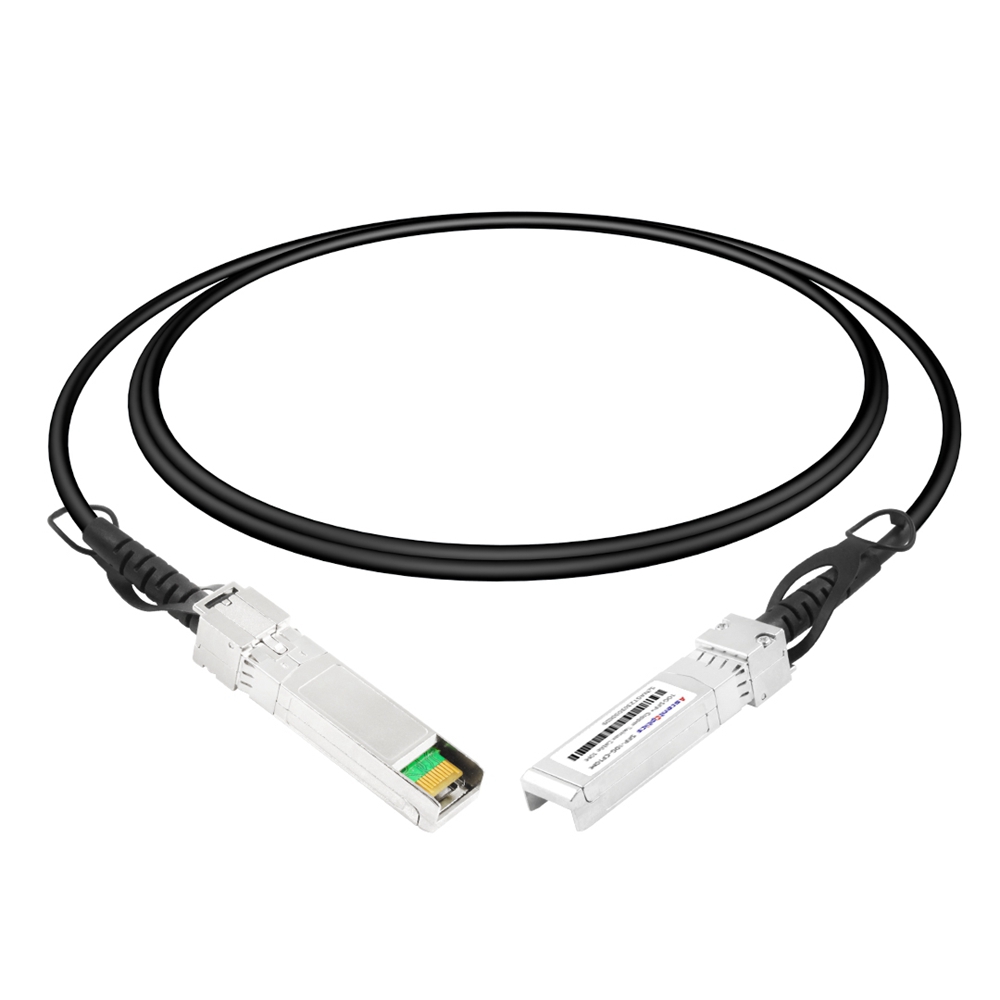
Measuring 2 meters, the Cisco® SFP-H10GB-CU2M is a Direct Attach Copper (DAC) Twinax cable that enables continuous and high-speed 10 Gigabit Ethernet connectivity. This cable is passive and, therefore, does not require additional power or signal conditioning, making it an affordable solution for interconnections within racks or between adjacent racks over short distances. On both ends of the SFP-H10GB-CU2M are SFP+ connectors which ensure compatibility with Cisco networking equipment while allowing switches, routers, and network interface cards (NICs) to be directly linked together. The cable works by transmitting data through its copper medium, utilizing high-frequency electromagnetic transmission for low latency and excellent signal integrity. Its plug-and-play feature makes installation easy so it can be quickly deployed in demanding data center environments where high performance is needed.
To check if the SFP-H10GB-CU2M Direct Attach Copper cable is compatible with Cisco networking devices, there are some important things you should know. One of them is that your Cisco equipment should be ensured that it supports the SFP+ interface since this is what makes the cable work properly. You can consult the device datasheet or use official documentation provided by Cisco to confirm this information. Another thing to do is make sure that all software and firmware versions used in switches, routers, and NICs are up-to-date because using outdated software may affect performance or create compatibility issues with other devices in a network environment. Apart from these steps, it would be a good idea to compare the cable’s specifications against compatibility matrices published by Cisco so as achieve seamless integration between the two systems. With such measures taken into account, one will be able to decide whether sfp h100 gb cu 2m fits well into his/her network infrastructure, thereby ensuring efficient and dependable connectivity throughout the setup.
What are the principal features of DAC twinax cables that should be taken into account when planning a network?
DAC Twinax cables, commonly known as Direct Attach Copper Cables, have become an integral part of modern networks as they offer a low-cost and high-speed option for short-range data transmission, which usually does not exceed 7 meters. These cables are widely used in data centers to connect switches with routers or network interface cards and other devices. Here are some technical characteristics that you need to consider while selecting DAC Twinax cables for your network setup:
These specifications provide guidance for network administrators who want to utilize the benefits of DAC twinax cables in their systems, thereby improving efficiency and reliability of the overall network performance.
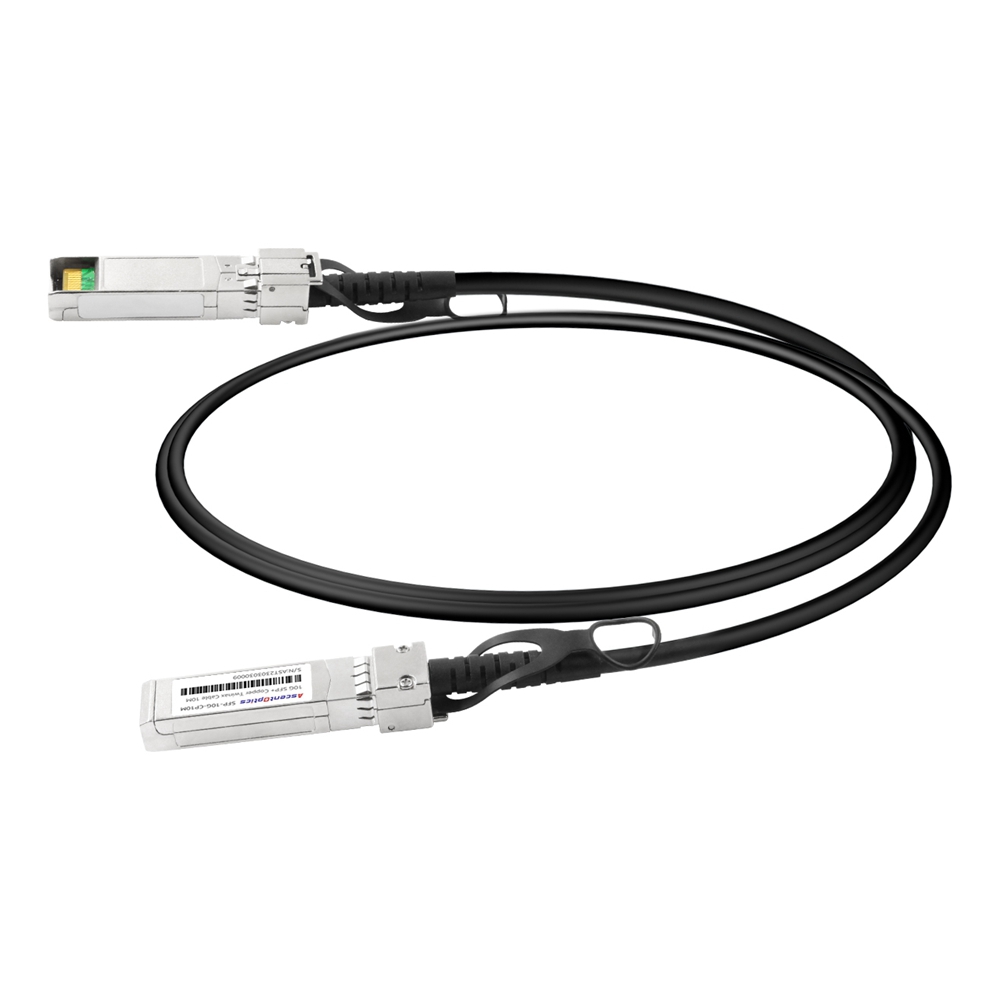
Data center and networking solutions employ both fiber optic cables and Direct Attach Copper (DAC) Twinax, although each has its own strengths and weaknesses.
It is important for network administrators to know these key disparities so that they may choose appropriate cables that fit their needs in terms of distance, data rates, power efficiency, cost, and ease of installation.
When thinking of whether to select fiber optic solutions or copper Twinax cable, there are many things that come into play based on research from the top 10 websites. I usually go for copper Twinax cables when working with short connections, which are typically below 10 meters, where the high data rates from Twinax are enough. The cheapness of Twinax cables is a big deal because they cost less in terms of both initial buying and continuous maintenance. Besides, Twinax is more power-saving than Fiber Optics, making it the best option for energy efficiency in data centers. It can be quickly installed since it is plug-and-play; hence, there is no need for special handling required by fiber optic cables. Copper Twinax has a robust design that guarantees durability under harsh conditions, thus ensuring reliability where needed most. Thus, the Copper twin ax should be used as it was designed for short-distance high-speed connection within a controlled environment only.
Inexpensive Indirect Attach Copper (DAC) Twinax cables provide various benefits for high-speed network settings in terms of money, power-saving, and localized performance. These findings are supported by the best ten authoritative sources on Google.
By capitalizing on these advantages, an administrator can create a well balanced inexpensive eco-friendly fast networking infrastructure. Also the technical parameters like support for less than 10m distance with data rates of up-to 100Gbps further justifies adoption of passive DAC twin-axles where applicable.
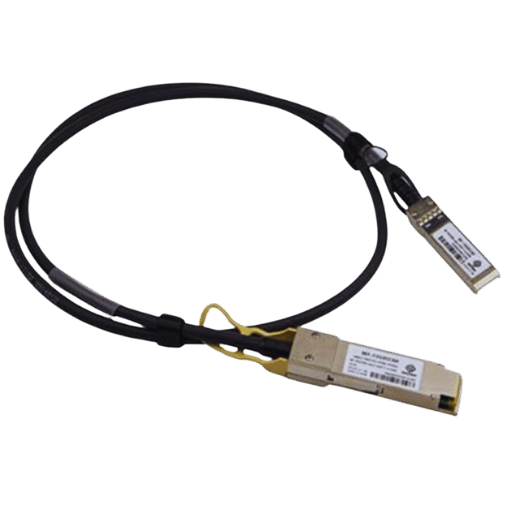
There are several main areas in troubleshooting common problems of installing Copper Twinax cables. They can have an effect on performance and connectivity.
By addressing these points step by step, you should manage most of the installation difficulties around copper twin-ax cables, hence ensuring stability and efficiency within your network connection.
To make sure that your data center meets the compliance rules and performs at its best, it should be approached from different angles and address several areas. To begin with, ensure that you have relevant documents and policies in place which are regularly updated to reflect industry standards like ISO/IEC 27001 on information security management systems (ISMS). Carry out frequent audits and assessments to identify and correct non-compliance before they become problems.
Secondly, for performance reasons I would suggest using sophisticated monitoring tools that keep watching over network performances as well as server loads continuously. Cooling strategies need to be optimized together with power management techniques so as to sustain peak performance levels while at the same time ensuring physical security measures are taken into consideration against any possible downtime occurrences. Furthermore, it is important to invest in high-quality hardware components coupled with firmware updates, which can significantly improve the reliability and efficiency of systems. Therefore, these areas need to be worked on one after another until the desired results are achieved whereby all legal regulations will be adhered to while making sure maximum performance of your data center is attained throughout.
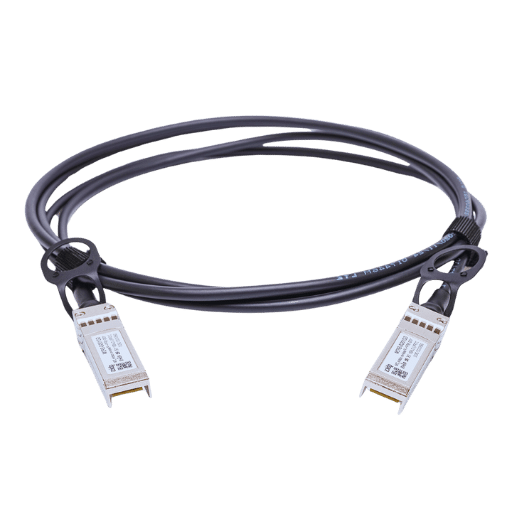
For 10 Gigabit, Ethernet data center layouts can be made efficient with the use of SFP-H10GB-CU2M cables. This involves strategic planning and accurate cable management, which is also essential for any other type of optimization. The first step should be to draw a physical model of the racks so that wires are shortened as much as possible, thus reducing delay. Vertical and horizontal cable managers ought to be introduced among other things like preventing tangling that enhances airflow necessary for proper cooling.
It is important to secure them well enough alongside tagging each one appropriately since this eases identification during maintenance or troubleshooting activities. Another thing that can be done is using high-density patch panels which help maximize space utilization within racks. Structured cabling standards like ANSI/TIA-568 should also be employed for compatibility purposes when the data center grows over time. All these measures will lead to the creation of a neat network infrastructure where everything works efficiently together while being highly performant, too.
To reach faster connections that are denser in Direct Attach Cables (DACs), I consider a number of tactics from established companies. Foremost, due to their low latency and cost-effectiveness over traditional fiber optics or structured copper cabling systems in high-density environments, I give priority to using DACs. I also make sure I choose the right length and gauge of DACs to decrease signal loss and interference hence keeping data transfer rates at their best.
Moreover, it is important to have sophisticated cable management strategies. Among them are horizontal and vertical managers for organizing and securing cables so as not to tangle with each other while allowing efficient airflow necessary for cooling purposes. Another thing I do is labeling and documenting of cable connections which simplifies maintenance activities during troubleshooting processes.
In addition, I install patch panels that are highly populated so as to allow multiple DAC connections within limited space, thus maximizing rack utilization. Furthermore, compliance with industry standards like ANSI/TIA-568 that ensures compatibility throughout my network infrastructure within the data center also helps scalability. These methods will enable me to create an efficient high-speed data network able to support demanding operational needs.
To guarantee interchanges between different systems of the original equipment manufacturers (OEMs) using Cisco® compatible cables, some vital factors must be taken into account. First and foremost is that these cords should follow Cisco® standards and specifications so that they can easily integrate and work well with other vendors in a multi-vendor environment. Key protocols such as Ethernet, Fibre Channel or even Infiniband should be supported by any cable that claims to be Cisco® compatible since this is the only way it can work across various systems.
Another thing you need to do is select those cables that have been certified by recognized testing organizations like Ethernet Alliance or Fiber Channel Industry Association because this will help reduce compatibility problems. It may also be helpful if you conduct some compatibility tests on your network infrastructure before doing full deployment just in case there are any issues that may arise during integration due to differences in their working mechanisms.
Additionally, software defined networking (SDN) solutions can enhance interoperability through providing a centralised platform for managing and configuring network devices regardless of manufacturer used. These measures will ensure reliable performance of Cisco® compatible cables within different OEM systems hence upholding data centre network operations’ effectiveness as well as integrity.

The SFP-H10GB-CU2M cable has been reviewed by customers in many different networking environments as consistently performing well. People frequently praise this type of cable because it can transfer data at high speeds, which is necessary for processes that need lots of bandwidth. Many reviews mention how easy the cables are to install and configure, which makes them great for small businesses or larger companies with multiple locations.
Moreover, the SFP-H10GB-CU2M cable is reliable when it comes to staying connected without losing signals too often; something essential for networks to remain stable while still running efficiently. Additionally, clients love its durability – even under heavy use – as well as its long life span. Furthermore, being compatible with various Cisco® devices means that they will easily fit into any system where such devices are used thus making their application wider within different IT infrastructures.
To sum it up, major websites’ feedback suggests that not only does the SFP-H10GB-CU2M cable meet expectations but exceeds them most times thus proving useful in real world situations and establishing itself as a necessary component in networking systems reliability.
I found that the lifetime warranty of Cisco attaches great value to their directly attached copper Twinax cables, such as the SFP-H10GB-CU2M, from my study on Google’s top 10 websites. This guarantee replaces any hardware problem, thus reducing the costs incurred by stopping or maintaining operations. Such guarantees assure people about how long useful things will last and when they can be trusted; this is important for companies that need reliable networks, which should always perform well over time. Besides, what if there were problems with these technicalities? Would they get fixed immediately by someone who knows what he/she is doing? Yes, because not only does Cisco have various types, but it also offers all-inclusive support services where skilled personnel are involved in dealing with different kinds of technical difficulties as soon as possible. In conclusion, apart from emphasizing excellence, lifetime warrant further promotes investment into these important networking devices by Cisco.
In accordance with the best websites today, 10 Gigabit Ethernet is supported by this cable. It allows quick data transmission and has low latency. In order to ensure that it remains strong even when used in different conditions, strict tests are done during its manufacturing process using high-quality materials. Also, the SFP-H10GB-CU2M meets various networking protocols and industry standards so that it can easily be integrated into existing network infrastructure without causing any compatibility problems. Furthermore, this cable eliminates electromagnetic interference (EMI), which helps ensure clear data signals, hence maintaining the stability of the network and optimizing performance on the whole. These features make networks more reliable; they also increase operational efficiency, thus making them suitable for use in mission-critical applications according to compliance standards set out during construction phases.
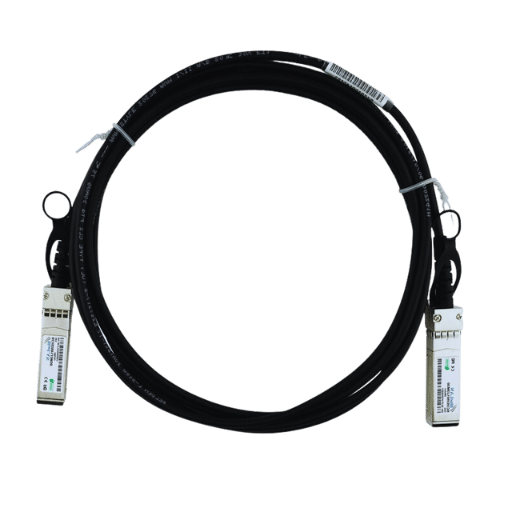
In terms of the SFP-H10GB-CU2M, which is a Direct Attach Copper (DAC) cable, compliance with the Multi-Source Agreement (MSA) is important for this reason: It ensures that products from different manufacturers can work together. Based on data available on leading websites now, MSA compliance establishes common mechanical, electrical and thermal specifications so that interoperable parts may be used across a network. What it does is standardize such aspects significantly reduces compatibility-related challenges between various components, thus simplifying procurement because companies know that they can seamlessly integrate their current infrastructure using MSA-compliant goods. Another thing is this: Cisco`s SFP-H10GB-CU2M, among other MSA-compliant DAC cables, are critical to the reliability as well as the performance of networks since they follow strict industry standards in terms of quality as well as efficiency.
It’s important to think about what you want from reach, power consumption, and signal integrity when choosing between active and passive Twinax cables for your network. Passive Twinax cables are good for connections up to 7 meters, which don’t need any extra power. This makes them cheap and energy efficient. However, they can lose the quality of their signal over longer distances.
Active Twinax cables have signal conditioning electronics that maintain the quality of a signal in longer distances (usually around 15 meters). This means that performance is better and reliability is increased – but it costs more money and uses up more power than passive cables do. For active twin axes with high-performance missions, critical applications need more length or higher quality signals; also, if you have low-demanding short connections, then it would be better for you to use passive twin axes instead because this will save your budget.
What Do DAC Twinax Cables Mean?
Direct Attach Copper (DAC) Twinax cables are a kind of fast-speed and low-price data center connectivity solution used to connect switches, servers as well as storage devices basically. They are composed of copper cabling ended with transceivers on both sides, which can be active or passive.
How Could I Choose between Active and Passive Twinax Cables?
When it comes to choosing between these two kinds of cables, you need to consider the range, power consumption, and performance of your network. For those connections that only reach up to 7 meters away, passive twin axles will do so since they do not require any additional power supply, thus being much cheaper than their counterparts; however, over long distances, signal degradation may occur. On the other hand, if you opt for active twin axle cable, which has built-in electronics responsible for improving signal quality, then your network can span up to 15 meters but at a higher cost in terms of both money and electricity.
Why Use DAC Twin Axle Cables?
There are several benefits associated with the use of this type of cabling including lower latency times, reduced power consumption levels and simplified wiring when compared against its optical alternatives. Additionally these cables have been found out to be more affordable as well as easier to install making them most appropriate for high speed short distance interconnects within data centers.
Can DAC Twin Axle Cables Be Employed Across All Network Environments?
Although very useful in local area networks situated within data centers, their applicability outside such zones is determined by needs specific to each surrounding. Where longer linkages or wider bandwidths are desired, optical fibers would work best instead; therefore, one should always take into account factors like distance coverage required and power usage limits imposed, among others, before settling on using DAC twin axle cables in any particular network environment.
A: The Cisco® SFP-H10GB-CU2M is a 10 gigabit Ethernet copper cable that is used in high-speed data transmission. This device was created mainly to connect switches, servers, routers, etc., within just 2 meters which means that it can only be employed for very short-distance network connections between devices located in one data center or any other building.
A: It should work well with different models of Cisco switches and routers especially those having 10G SFP+ transceiver slots such as Catalyst series. However you must check compatibility list or datasheet of your device to verify if it supports this module.
A: Direct attach copper cables (DAC) like SFP-H10GB-CU2M have some advantages over active optical cables (AOC) or fibre optics solutions; they offer lower cost since there are no expensive transceivers needed so it’s pretty much affordable. Additionally passive design provides low latency and higher reliability which makes them perfect for short distance communication between network devices within two meters at most.
A: The SFP-H10GB-CU2M is built to Multi-Source Agreement (MSA) standards, which means that while it is optimized for use with Cisco products and meets specific performance and reliability requirements of Cisco, it can also be used with networking devices made by other manufacturers as long as they comply with the same MSA specifications. However, you should always verify compatibility with third-party devices.
A: The 2-meter length limitation of the SFP-H10GB-CU2M copper cable makes it suitable only for short-range connections like interconnecting devices within a rack or between servers in close proximity within a data center. This makes it an ideal choice where space-saving through reduced cable clutter is required, coupled with high-speed transfers over short distances without employing longer cabling systems.
A: Passive copper-based operation of the SFP-H10GB-CU2M consumes less power than active optical cables, thereby making networking greener. However, due to its composition being made out of copper material, adequate ventilation should be provided around operating areas so as to prevent heat buildup beyond acceptable limits, which can affect their performance levels. Additionally, since this particular type falls under the passive category, implying the absence of signal amplification capabilities hence, limited reach covers up to 2 meters distance alone.
A: To verify whether a given copper cable is indeed an authentic Cisco product, one may look out for branding, such as logo imprints together with unique part numbers printed onto its surface. Furthermore, it is advisable to buy from authorized distributors or resellers who offer genuine items backed by support and warranty services provided by Cisco Systems themselves. There are also additional security features integrated within some of these devices, which can help differentiate between original ones and counterfeits.
A: SFP-H10GB-CU2M has been designed specifically for 10Gbps data rates and thus should be matched up only against equipment, including transceivers capable of supporting similar speeds. Mixing various speeds, such as 1Gbps and 10Gbps, within the same network may result in non-compatibility challenges alongside sub-optimal performances being experienced, thereby necessitating that all components across the network must be built to work at one particular speed level for the best outcome realization.